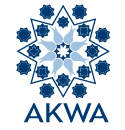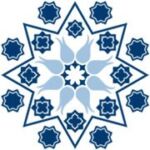For Muslims, a mosque is more than a place of worship. Muslims worship, study, discuss Islamic issues and do many other things in a mosque and its compounds. In many countries many mosques are used as community centers. They are also used to teach about Islam. Religious festivals and gatherings are held in mosques. Especially for those who live in non-Muslim countries, mosques play a role in unifying people for Islamic education, social activities, getting to knowing each other, conserving and pursuing their religious and cultural values.
Prophet Muhammad PBUH said;
Whoever builds a Masjid seeking the face of Allah, Allah will build for him something similar to it in Paradise.
Enjoy reading the interview we did with Mehmet Demiroglu who was involved in the building of a new mosque, Al-Hidaya Center in Troy, NY.
We’d like to start our interview by asking for some general information about the city of Troy. Could you tell us about it please? Its whereabouts, population, some other interesting facts?
M. Demiroglu: Troy is one of the three cities of which NY Capital District consists of. It is located 8 miles north of Albany, the capital city of New York, and 150 miles north of NY City. The Capital District area is considered the birth place of the industry.
Troy is the home of Uncle Sam and also one of the oldest engineering schools, Rensselaer Polytechnic Institute (RPI). Although its population was over 100,000 at the end of 19th Century, the current population is only ~ 50,000 as of 2013.
It is a typical historic American town trying to bounce back economically as well as demographically.
Could you also tell us about the Muslim populations that live in this city? How many are there, does the majority consist of converts or immigrants, and what are the Islamic activities that are organized for these Muslims?
M. Demiroglu: The Muslim Student Association (MSA), started in the late 70’s by Muslim students at RPI. There were waves of students from various countries. For example, in the 80’s, Algerian and Pakistani students were dominant. In the 90’s, Malaysian and Turkish students were dominating the MSA. Now, American Muslims are the majority in MSA. By 2001, all the activities of Muslims in Troy, including non-students, were handled by MSA. In 2001, we established the Muslim Community of Troy (MCT) to better focus the needs of the non-student Muslim community. In MCT, the majority of the Muslims are immigrants, but it is changing rapidly with the addition of converts as well as their children. It is difficult to give a number but around 10,000 Muslims are thought to be living in the capital district.
Was there a mosque in Troy before? If not, where did the Muslims meet for Jum’a and Eid prayers? Why did you feel the need for a new mosque?
M. Demiroglu: Yes. There is a masjid in Troy. It was purchased mainly by students in 1986. Jum’a prayers were always held on RPI’s main campus. We are very grateful to the school administration for their help and understanding to accommodate us throughout these years, not only for Jum’a prayer, but also Eid prayers and our fundraising & community dinners. Taraweeh prayers were always in the Troy Masjid.
By the early 90’s the talk of a new masjid had already started and finding a place for a new masjid was in progress during the second half of the 90’s and early 2000s. Rapid growth of non student members of the community in the 2000s also pressurized us to expedite the process.
What kinds of activities and events do you have for Muslims and non-Muslims alike for them to benefit from this mosque?
M. Demiroglu: In the previous masjid, we had 5 daily prayers and taraweeh prayers, Islamic weekend school, hafiz school, seminars/halaqah and daily iftaars during Ramadan. Marriage services and consulting were also provided to Muslims.
Because of the size of our previous masjid, we were very limited to have any activities for the Non-Muslims. Sometimes high school kids used to come and watch a prayer and seldom there were interfaith visits as well.
Alhamdulillah, our new masjid offers us plenty of space. In addition to the activities we mentioned above, we are praying Jum’a and Eid prayers in our new masjid. We have interfaith programs, and accept visits from schools and from other faith based organizations as well. We will also have dinners, fund raising, seminars, weddings and special classes etc.
Generally, the mosques are built by charitable citizens in Turkey. From where do you get the needed funds in America for this task?
M. Demiroglu: As is everywhere, this project was also built mainly with the contributions from the community. Aside from two major donors, the members of the community including students have been contributing to this project throughout these years.
Could you please tell us about the architectural features of this mosque?
M. Demiroglu: Our masjid is a mixture of traditional and modern architecture. From outside, you can say that it reminds one of Iranian-Seljuk architecture with two big entrances and two minarets. The prayer hall is 24 m x 24 m X 8 m with an 11 m diameter dome. The lobby is a 26 m x 20 m opening with a large skylight to utilize the daylight. We have offices, a library, a board room, shoe & coat rooms, a kitchenette and a separate room for the sisters with small children. They can entertain their children while watching & listening to the programs.
We know that in America, there are different and diverse tasks that fall upon the Imams besides leading the prayer and giving the Khutbas on Fridays. Big responsibilities fall upon our Imams in order to save our Muslim youth from the effects of the melting pot, from the pressures and wrongs of the environment, and to provide accurate information that they can access with ease. When you look through these points, what can you tell us about your Imam’s responsibilities?
M. Demiroglu: This one is a tough one, however, I somewhat disagree with the above statement. Yes, the burden of protecting our kids, our families and also ourselves are heavy, but it cannot be put only to the shoulder of our Imams. Everybody in a community must carry a portion of the load according to their capacity. We need to be very active in community affairs and take the leadership position if possible. We have to remember that it takes a village to raise a child. We also need to realize that our youth are different than us when we were young. We need to accept this fact and prepare them for society and for the times they live in. We need to start institutions to raise new imams, community leaders and activists here in the US. We need to give them role models and be role models. Actions speak louder than words.
There are many mosques that have been built recently in many cities across the US. Unfortunately, people who are against Islam are trying to prevent this from happening by organizing protests and other various forms of objection. Have you come across this issue? If yes, how did you solve your troubles?
M. Demiroglu: Alhamdulillah, so far we have not had a big issue. There were small isolated incidents which happen everywhere. We did not think it had anything to do with Islam/Muslims or a Mosque. It is amazing to see that despite so many negative painting in the media, people are still tolerant and understanding. We should not take it for granted though and be proactive to show the real face of Islam with respect and love. We have to be very good Samaritans and be good examples for our fellow Muslim and non-Muslim neighbors.
AL-HIDAYA CENTER
Islamic Community Center of Troy & Latham NY
322 Troy Schenactady Rd, Latham, NY 12110
(518) 608-1256
al-hidaya.org




Yorum Bırakın / Leave a Comment